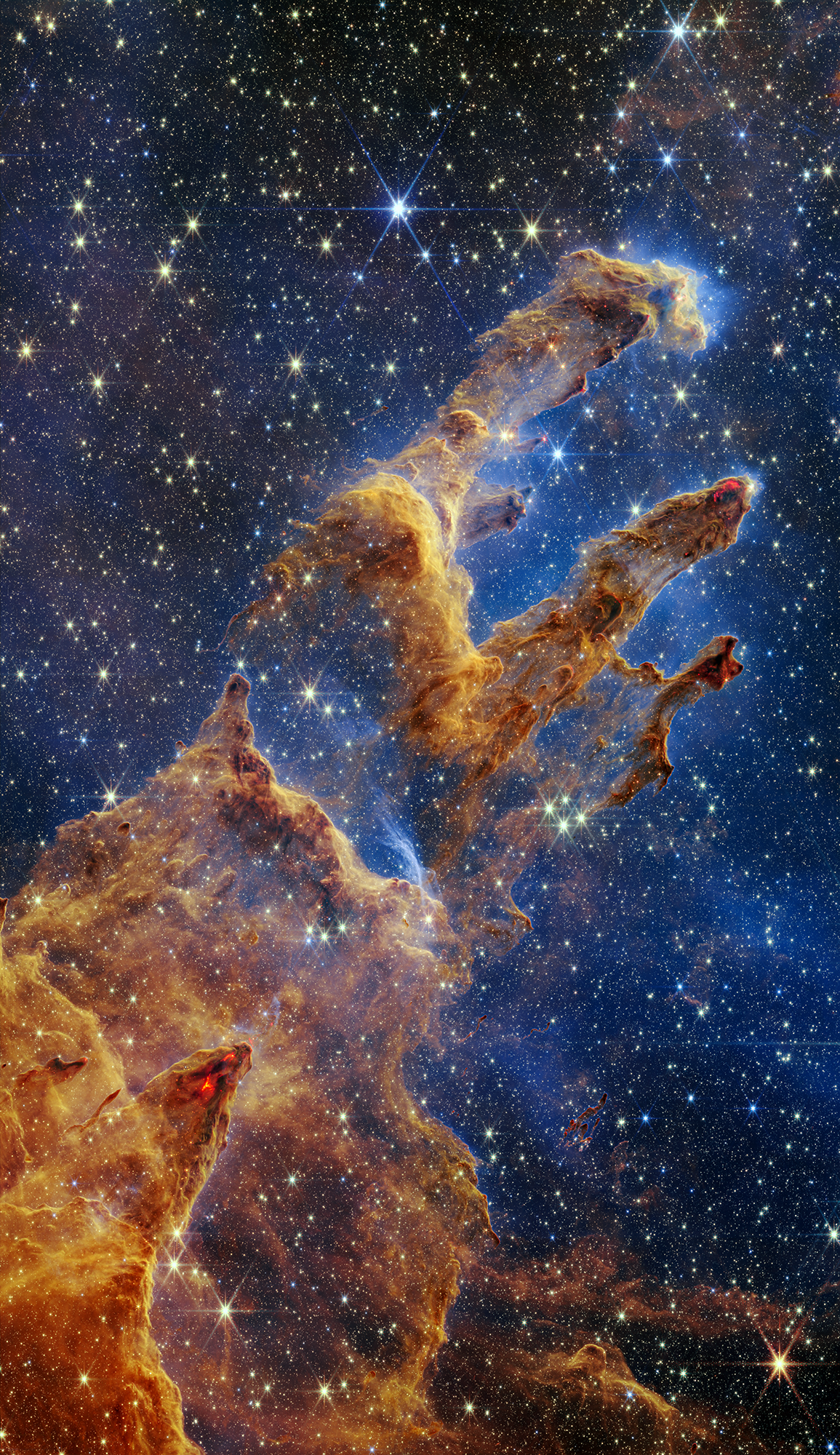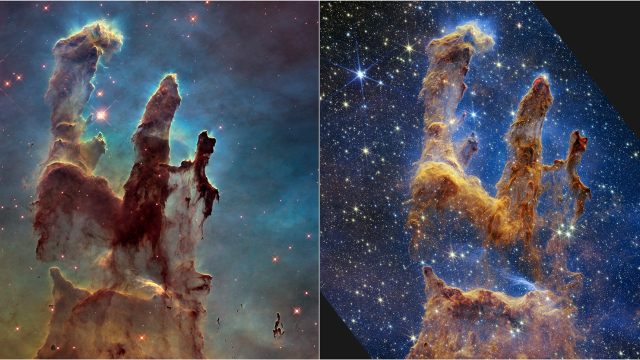The Webb Space Telescope has just imaged what might be its most iconic target yet: the Pillars of Creation, a monumental arm of the Eagle Nebula.
The pillars are so-named for their magnitude. They are light-years-long tendrils of gas and dust that reach out like the grand fingers of a cosmic hand. The recent image, taken by Webb’s Near-Infrared Camera, or NIRCam, highlights the bright red sites of new star births.
Small red dots on the edges of the pillars are baby stars — only a few hundred thousand years old, according to the Webb team. The red, lava-like streaks in the clouds are ejections from stars being formed. These nascent gas balls send off jets of material that strike the gas in the pillars, causing energetic hydrogen molecules in the system to glow.
The pillars sit in the Eagle Nebula, a cloud of dust and gas about 6,500 light-years from Earth. The entire nebula measures about 70 light-years by 55 light-years; the Pillars of Creation are a roughly 5 light-year-long arm of the larger structure.

Though the nebula was discovered in 1745, the pillars only became globally famous when they were imaged in glorious detail by the Hubble Space Telescope in 1995. Hubble then re-imaged the site in visible light in 2014. When seen side-by-side with Webb’s infrared view, it’s clear how dazzling the new image is. (You also can check out full-resolution, uncompressed versions of these images directly from the Space Telescope Science Institute.)
The pillars — brown and turbid in Hubble’s view — appear luminous and orange to Webb. The backdrop of gas and deep space turns from an opaque turquoise to a bedazzlement of stars, shining through a sea of lapis lazuli gas. That’s because Webb’s image highlights the hydrogen atoms in the gas, which shine in blue light. The Webb telescope’s infrared eye also penetrates through dense clouds of dust and gas, allowing it to see previously unknown regions of star formation.
At the angle captured by Webb, it’s no stretch of the imagination to see Michelangelo’s famous Creation of Adam evoked by the reach of the massive pillars. The image also is a reminder of how dynamic space is, even on massive scales: what appears resolute in Hubble’s view seems much more animated from Webb’s perspective.
In the months to come, Webb will take more images that will key researchers in to how stars are born, how galaxies evolve, the most ancient light we can see, and even the structure of the planets nearest to us.
You can keep track of what Webb is viewing at any given moment thanks to this handy Twitter bot. Of course, keywords like “white dwarf” and “spiral galaxies” don’t do a shred of justice to the objects they describe. The majesty of space defies description, especially as seen through the palantir that is Webb.
